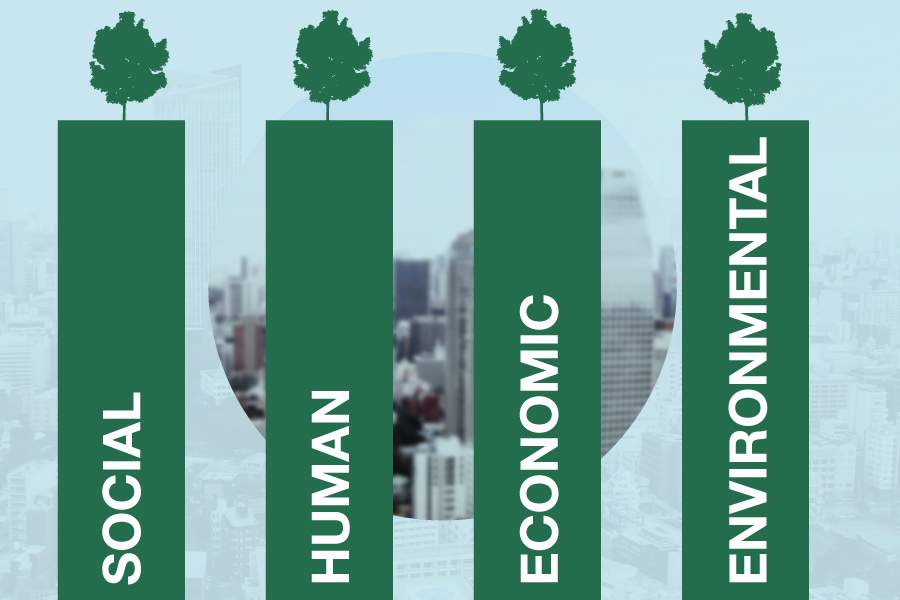A healthy work environment is not a soft benefit or a cultural accessory; it is the single most reliable predictor of long-term organizational stability.
Companies that invest in structured work environment standards see lower turnover, stronger productivity, fewer compensation claims, and more consistent year-over-year growth.
The concrete answer is simple: sustainable growth is only possible when employees can perform at a high level without burning out, getting injured, or feeling unsupported, and formal work environment standards create the systems that make that possible.
Everything else, from innovation to customer experience, rests on that foundation.
Why Standards Matter: The Strategic Logic

Source: glassdoor.com
Work environment standards are rules, frameworks, and routines that keep workplaces safe, clear, and organized. But their value extends far beyond compliance. They influence culture, decision-making, operational tempo, and even how teams handle uncertainty.
A company without defined standards will always depend on the personal habits of individual managers. A company with standards creates predictable conditions—meaning employees do not waste mental energy navigating unclear expectations, unsafe setups, or preventable friction. That stability compounds over time. Productivity increases not because people work harder, but because they work without constant disruption.
Below is a simple table that illustrates the difference between organizations with and without structured work environment standards:
Organizational Impact of Work Environment Standards
| Area | With Standards | Without Standards |
| Productivity | Stable, predictable performance | Fluctuates based on management quality |
| Employee Turnover | Lower, due to clearer structure | Higher, due to stress and confusion |
| Safety | Few incidents, strong reporting culture | Frequent incidents, unclear responsibilities |
| Growth Pattern | Steady, long-term | Irregular, vulnerable to setbacks |
| Culture | Trust-based, transparent | Dependent on personalities, inconsistent |
When viewed this way, it becomes obvious that growth does not emerge from talent alone. It emerges from conditions that allow talent to function without constant interruption or harm.
How Standards Stabilize Operations Over Time
Modern companies face pressures that change rapidly—new regulations, shifting market expectations, hybrid work demands, and the pressure to automate. What often goes unrecognized is how much stability work environment standards provide in those transitions.
1. They reduce risk at every level of the organization

Source:rready.com
Clear safety routines, ergonomic guidance, mental health protocols, and structured reporting systems all reduce the likelihood of severe incidents that can disrupt operations for months. Even small disruptions—like repetitive-strain injuries or high stress—create hidden drag on productivity.
2. They preserve institutional knowledge
Healthy work conditions reduce burnout, which means people stay longer. Long-tenure employees are the backbone of sustainable growth because they carry operational wisdom that cannot be replaced by new hires or training manuals.
3. They sharpen decision-making
Organizations with defined standards make better decisions because leaders are working from a shared understanding of what “safe,” “healthy,” and “sustainable” mean in practice. Without that alignment, decisions become inconsistent, reactive, and highly situational.
4. They improve adaptability during growth phases
Scaling a company strains every internal system. Teams take on new responsibilities, new roles form quickly, and frameworks that used to work begin to break. Work environment standards give companies a reference point during these transitions, preventing chaos and preserving psychological safety.
Why Employees Perform Better Under Clear Conditions

Source: liveabout.com
People work best when they know what is expected of them, feel physically comfortable, and understand the boundaries of their responsibilities. Work environment standards remove ambiguity, the single biggest enemy of workplace performance.
Psychological Safety
Employees who believe their workplace prioritizes their well-being take more initiative, share more ideas, and collaborate more effectively.
Physical Comfort
Ergonomics and workspace design reduce chronic pain, fatigue, and micro-stressors that lower output across the day.
Mental Clarity
Work environment routines structure the workday, reducing surprises and helping employees conserve cognitive energy for actual tasks rather than constant problem-solving.
Table: How Work Environment Standards Improve Performance
| Category | Effect on Employees |
| Ergonomics | Higher energy, fewer injuries |
| Mental Health Practices | Better focus and resilience |
| Clear Routines | Faster workflow, less confusion |
| Transparent Leadership | Higher trust, smoother collaboration |
The science on this is consistent: stable conditions create stable performance. Companies that ignore this reality usually pay for it later through turnover spikes, medical leave, and stalled growth.
The Role of Training and Competence Development

Source:forbes.com
Even the best standards collapse without proper education. Employees and managers must know how to apply them, and they need practical knowledge—not theoretical manuals that sit unused in a shared folder.
This is where targeted safety and work-environment training becomes essential. In Sweden, for example, many organizations rely on digital bamutbildning as a central part of their competence strategy. These programs help teams understand not only the regulations but also how to implement them in real workplace situations. Digital formats allow companies to train consistently, especially across multiple locations.
When employees understand risk assessment, early intervention, communication routines, and reporting procedures, work environment standards stop being theoretical and start functioning as everyday tools. That shift is what ensures they actually contribute to growth rather than becoming bureaucratic documents.
Work Environment as a Business Asset, Not an Obligation
One of the biggest mindset shifts modern organizations face is seeing the work environment as an investment in performance, not an administrative burden. The financial logic is strong:
- Preventing a single long-term injury is cheaper than replacing an experienced employee.
- Reducing turnover by even 5 percent stabilizes project delivery timelines.
- Improving ergonomics can increase daily productivity by 10 to 15 percent.
- Mental health standards reduce absenteeism and improve team cohesion.
These are not minor improvements. They reshape the financial trajectory of the organization.
Companies that integrate work environment standards into their strategic planning tend to outperform competitors during crises because their teams function more smoothly under pressure. They have fewer breakdowns, fewer sudden resignations, and fewer operational failures caused by human fatigue.
How Standards Support Sustainable Growth Cultures
Sustainable growth requires a culture that values continuity over short-term wins. Work environment standards reinforce that culture by creating habits that support long-term functioning.
1. Predictability
Predictable environments allow employees to plan, collaborate more effectively, and deliver work on time with less stress.
2. Consistency
Standards ensure that, regardless of department or location, employees experience the same level of clarity and protection.
3. Transparency
Clear processes reduce the possibility of favoritism, miscommunication, or informal rule-making.
4. Collective Responsibility
When standards are part of everyday work, the responsibility for safety and well-being becomes shared, not delegated.
5. Trust
Employees trust organizations that invest in their health and safety. Trust increases loyalty and reduces turnover, two key components of sustainable growth.
Case-Like Scenario: How Standards Influence a Growing Workforce

Source: brookings.edu
Imagine a company expanding from 50 employees to 200 within two years. Without structured work environment standards, the following problems appear:
- Rapid burnout among managers
- Overlapping responsibilities
- Rising injury rates caused by disorganized workflows
- Declining morale from unclear rules
- Chaotic onboarding
- High turnover among new hires
With standards, the experience changes dramatically:
- Training pathways are defined
- Workflows are documented and repeatable
- Responsibilities are clear
- Risks are identified before they cause disruption
- Employees feel protected and supported
- Growth feels manageable instead of overwhelming
This difference determines whether the company scales sustainably or collapses under pressure.
Growth Outlook With vs Without Work Environment Standards
| Growth Factor | With Standards | Without Standards |
| Onboarding Quality | Consistent, structured | Unpredictable, error-prone |
| Employee Engagement | High commitment | Disconnected workforce |
| Compliance Risk | Minimal | High, especially during growth |
| HR Stability | Steady, low turnover | Frequent recruitment cycles |
| Long-Term Growth Capacity | Strong | Weak and fragile |
Conclusion
Sustainable growth depends on the environment in which people work every day. Work environment standards provide the routines, training, structure, and clarity that allow teams to perform without burning out, compromising their safety, or wasting energy on avoidable problems. They preserve knowledge, reduce risk, stabilize performance, and give companies the foundation they need to grow year after year.





















